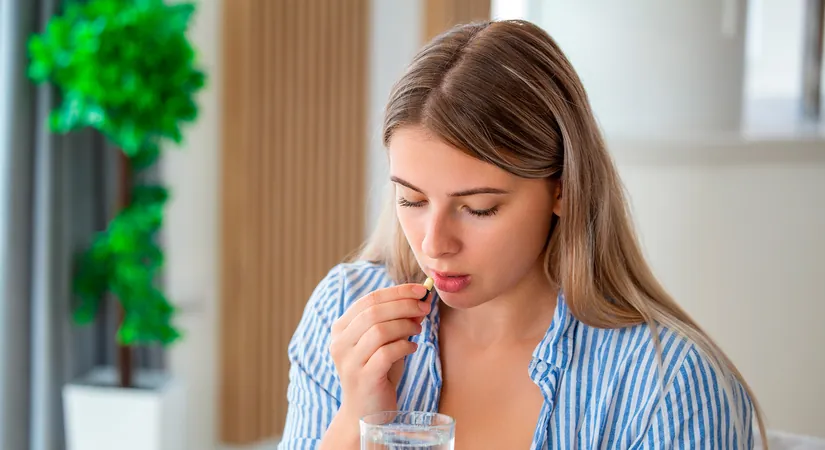
The Surprising Truth About Antibiotics and Your Gut: What You Need to Know to Recover!
2024-09-18
Author: Arjun
Antibiotics: Friends or Foes to Our Gut Health?
While antibiotics effectively eliminate harmful bacteria, they also indiscriminately target beneficial gut bacteria, leading to potential health consequences. Key bacterial groups such as Bacteroidetes, Firmicutes, and Actinobacteria are particularly vulnerable. These beneficial bacteria support essential functions like digesting fiber, producing vitamins, regulating the immune system, and maintaining gut integrity. Disruption in their population can create an environment where pathogenic bacteria like Clostridioides difficile can thrive, leading to severe gastrointestinal issues. Furthermore, the overuse of antibiotics, especially in cases where they are not necessary, propels the rise of antibiotic-resistant bacteria—a growing public health crisis linked to over one million deaths annually, according to the CDC. It’s a stark reminder that while antibiotics are invaluable tools, their misuse can have dire consequences.
Long-Term Effects: More Than Just Gut Problems
The ramifications of antibiotic use extend beyond immediate gut disturbances. Studies suggest that exposure during infancy may increase the risk of conditions such as asthma, obesity, and neurodevelopmental disorders—highlighting the critical role a healthy gut microbiome plays in overall health. In adults, gut microbiome diversity can be altered for up to six months post-antibiotic treatment, reaching states akin to those of critically ill patients. Some individuals may even become reservoirs of antibiotic resistance genes, posing risks to others around them.
Recovering Your Gut: What Science Says
Post-antibiotic recovery is essential for restoring gut health and mitigating side effects such as diarrhea, gas, and cramping. Probiotics and prebiotics are promising strategies to achieve this balance. Research indicates that certain probiotics can effectively reduce antibiotic-associated diarrhea, particularly strains like Saccharomyces boulardii and Lacticaseibacillus rhamnosus GG. These probiotics not only survive stomach acidity better than others but can also be administered alongside antibiotics, making them versatile allies during treatment. To harness their benefits, introduce probiotics at the start of antibiotic therapy, continuing for at least a week after treatment ends. While the ideal duration for recovering gut health remains unsure, evidence suggests that maintaining a high-fiber diet is crucial. Foods rich in prebiotic fibers such as mucin glycans and xanthan gum can bolster the growth of beneficial gut microflora, aiding recovery.
Advanced Recovery Techniques You Might Not Know About
Exciting new approaches to restoring gut health are on the horizon. Fecal microbiota transplants, while still emerging in mainstream practice, show promise for repairing the gut microbiome rapidly. Researchers are also looking into the use of non-antibiotic drugs that could potentially enhance antibiotic efficacy without compromising beneficial bacteria. Additionally, minimizing antibiotic levels in the gut through enzymatic processes could help preserve the essential gut ecosystem.
In Conclusion: Protect Your Gut Health Post-Antibiotics
In our quest for health, antibiotics are invaluable tools—but their effects on the gut are profound and lasting. By understanding these nuances and implementing strategies to restore gut health, we can ensure that our microbiomes remain resilient and beneficial. Don’t let antibiotics wreak havoc on your body— take these proactive steps to nurture your gut back to its ideal state!


 Brasil (PT)
Brasil (PT)
 Canada (EN)
Canada (EN)
 Chile (ES)
Chile (ES)
 España (ES)
España (ES)
 France (FR)
France (FR)
 Hong Kong (EN)
Hong Kong (EN)
 Italia (IT)
Italia (IT)
 日本 (JA)
日本 (JA)
 Magyarország (HU)
Magyarország (HU)
 Norge (NO)
Norge (NO)
 Polska (PL)
Polska (PL)
 Schweiz (DE)
Schweiz (DE)
 Singapore (EN)
Singapore (EN)
 Sverige (SV)
Sverige (SV)
 Suomi (FI)
Suomi (FI)
 Türkiye (TR)
Türkiye (TR)